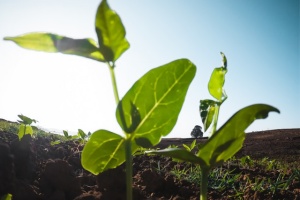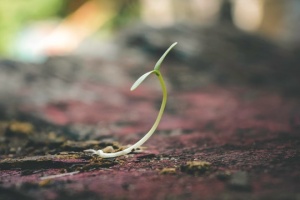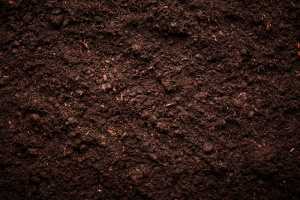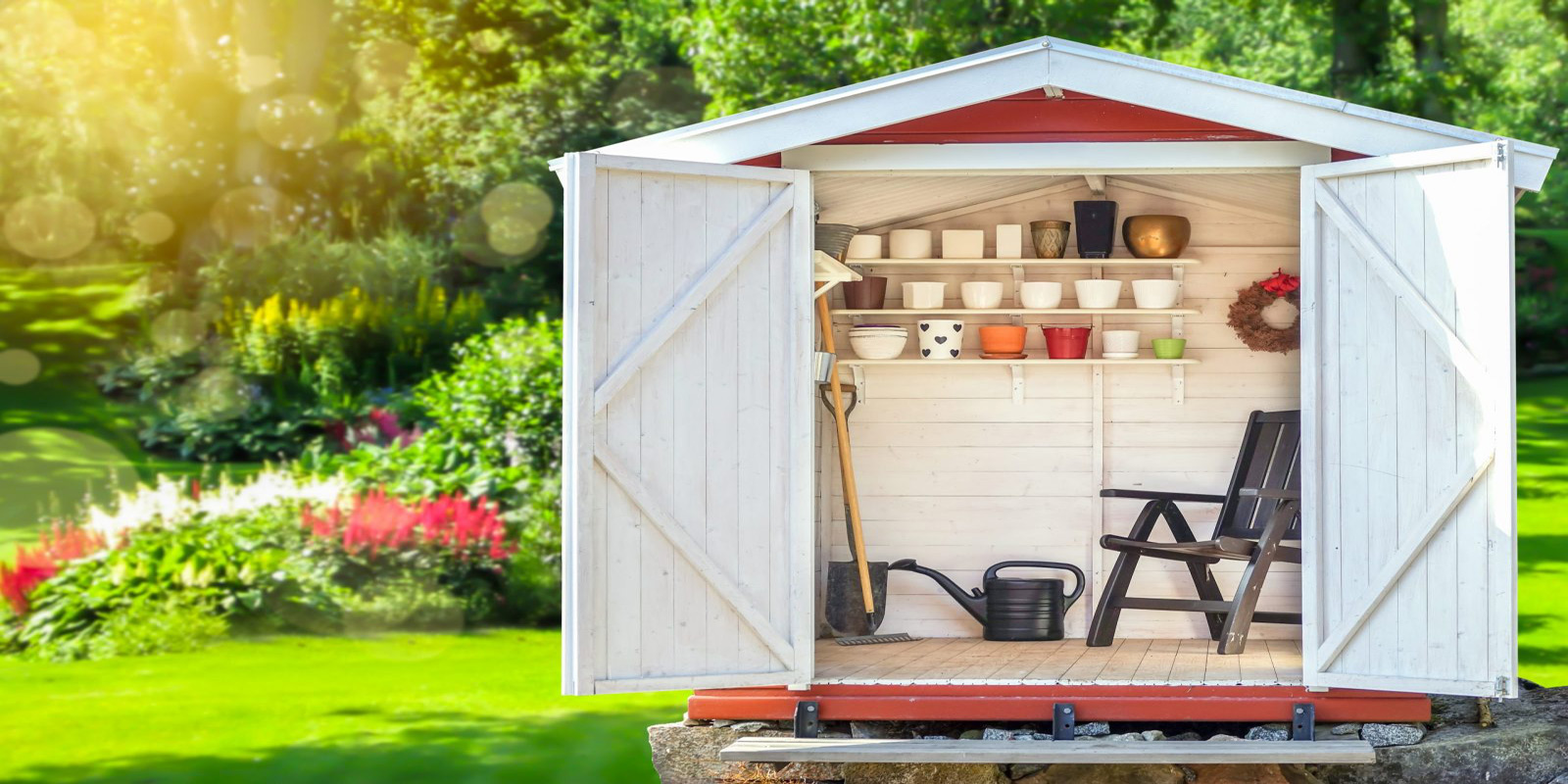To have an effective bioretention stormwater management system, a project manager or property owner should use bioretention soil. Benefits of bioretention soil is to support vegetation and improve drainage in bioretention cells, also called rain gardens.
 Bioretention soil is soil that is engineered with the right mix of sand, soil and compost for your location. The ratios can vary based on your project location. The soil provides the correct water infiltration rate and supports vegetation and healthy microorganisms. With correctly formulated bioretention soil, you can get optimal water runoff filtration and treatment while simultaneously promoting healthy growth of vegetation.
Bioretention soil is soil that is engineered with the right mix of sand, soil and compost for your location. The ratios can vary based on your project location. The soil provides the correct water infiltration rate and supports vegetation and healthy microorganisms. With correctly formulated bioretention soil, you can get optimal water runoff filtration and treatment while simultaneously promoting healthy growth of vegetation.
Developing the right bioretention soil for your project site is a science. The success of the project’s stormwater management can depend on ensuring that it is customized to meet the specific demands of the site. For more detailed information about bioretention soil, refer to the article entitled, What Is Bioretention Soil?
Benefits of Bioretention Soil
Use of bioretention cells and properly formulated bioretention soil is a stormwater management best practice. The goal of a bioretention cell or rain garden is to reduce stormwater runoff and improve storm water quality.
With careful planning and engineering, your project can accomplish both of those goals in a way that is natural, cost effective, helps the environment, and enhances the landscape appeal of your property.
No matter what the size of your project, whether it is your home or a major commercial construction project, bioretention works. Taking the time to figure out the proper ratio of sand, soil, and compost to create the right bioretention soil your project needs can provide many benefits. Here are several of them:
- Removes 95 to 98% of Metal Pollutants in StormWater RunOff.By using leaf mulch compost in correct proportion to soil and sand, your bioretention soil can remove 95 to 98% of cadmium, zinc, and lead found in stormwater runoff.
- Reduces Nitrogen and Nutrient Levels in StormWater RunOff.
 Using a properly balanced bioretention soil can lower the nitrogen levels in the runoff by 40%. It can also reduce nitrate-nitrogen by 15 to 75% and phosphorus by as much as 65%
Using a properly balanced bioretention soil can lower the nitrogen levels in the runoff by 40%. It can also reduce nitrate-nitrogen by 15 to 75% and phosphorus by as much as 65% - Replenishes the GroundwaterUsing the correct bioretention soil in your rain garden allows the storm water to infiltrate the ground and replenish the groundwater. To get an idea of the volumes of water this affects, think about an agricultural area with little paved surfaces. On agricultural land, 80% of storm water infiltrates the ground and only about 20% of it runs off site. In contrast, in suburban and urban areas, only 20 to 50% infiltrates into the ground and 50- 80% runs off site.
- Cost EffectivenessIf you are a developer, you can reduce your costs by using properly engineered bioretention cells and bioretention soils. Using bioretention soil reduces flooding and lowers the storm water impact fees you have to pay per square foot of impervious surface on site. It also cuts costs associated with traditional pipe and tunnel systems to manage stormwater runoff.
If you are a homeowner, you can easily create rain gardens in areas of your yard where runoff is creating erosion problems. Talk to a soil expert for advice on creating a rain garden and to determine the correct location, size, and shape of it.
- Reduces Damage from Erosion Caused By Runoff Rivers and Super Highways
 Effective management of stormwater runoff will prevent you from having to face difficult erosion correction challenges later. Stormwater runoff can quickly create deep fissures on slopes and undermine the stability of the surface. Correcting these problems later can be difficult and expensive. Get help from a soil engineer and install one or more bioretention cells or rain gardens before you have erosion issues and save yourself time and prevent future challenges.
Effective management of stormwater runoff will prevent you from having to face difficult erosion correction challenges later. Stormwater runoff can quickly create deep fissures on slopes and undermine the stability of the surface. Correcting these problems later can be difficult and expensive. Get help from a soil engineer and install one or more bioretention cells or rain gardens before you have erosion issues and save yourself time and prevent future challenges. - Rain Gardens Are Aesthetically Pleasing in the LandscapeYou can install a home rain garden in almost any unpaved space. They are simply depressed areas in your yard that may collect rainwater from a roof, driveway or street. The water in a short period of time will be absorbed into the ground.
As noted above, rain gardens will help filter out pollutants from the run off. This makes them appealing to butterflies, birds and wildlife by planting them with shrubs, grasses, and flowering perennials. A rain garden is a cost effective and beautiful way to reduce or eliminate runoff from your property.
In some cases, the existing soil can be used in your home rain garden. For the rain garden to work properly, it needs to have adequate water infiltration rates. It may be enough to amend your native soil with sand or compost. Consult a soil expert for advice on amending soil. Your plant selection is also important. Many people make the mistake of assuming that wet-tolerant plants such as cattails, marsh reeds, and so forth, are necessary. In fact, plants for a rain garden must withstand short periods of water inundation followed by dry periods. Place more drought tolerant species around the perimeter and the more moisture tolerant species in the center. This design mimics natural ground water hydrology by infiltrating, evaporating, and transpiring stormwater runoff.
Contact Dirt Connections for More Information about Bioretention Soils
 Wherever there is pavement, there is stormwater runoff. Stormwater runoff causes water pollution. It causes pollution because every road, parking lot, building, or hard surface holds pollutants such as motor oil, fertilizers, petrochemicals, animal and human waste and construction sediment. When it rains, those substances wash into every body of water. When that happens, the streams, rivers, lakes, wetlands and watersheds flood, and sewage backflows. It poisons the environment overall.
Wherever there is pavement, there is stormwater runoff. Stormwater runoff causes water pollution. It causes pollution because every road, parking lot, building, or hard surface holds pollutants such as motor oil, fertilizers, petrochemicals, animal and human waste and construction sediment. When it rains, those substances wash into every body of water. When that happens, the streams, rivers, lakes, wetlands and watersheds flood, and sewage backflows. It poisons the environment overall.
Bioretention soil and rain gardens are a cost-effective way to manage stormwater runoff on your project and support healthy vegetation. For optimal performance, you should make sure you use the correct soil formula for your project. Speak with the experts at Dirt Connections regarding bioretention soils or to order a delivery of a custom mix.













































